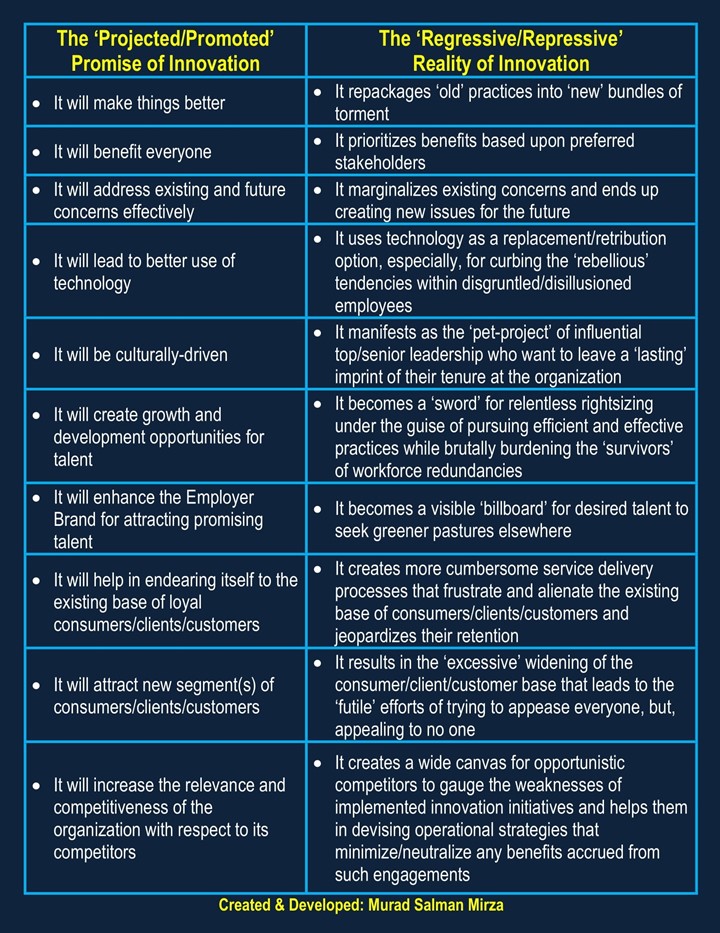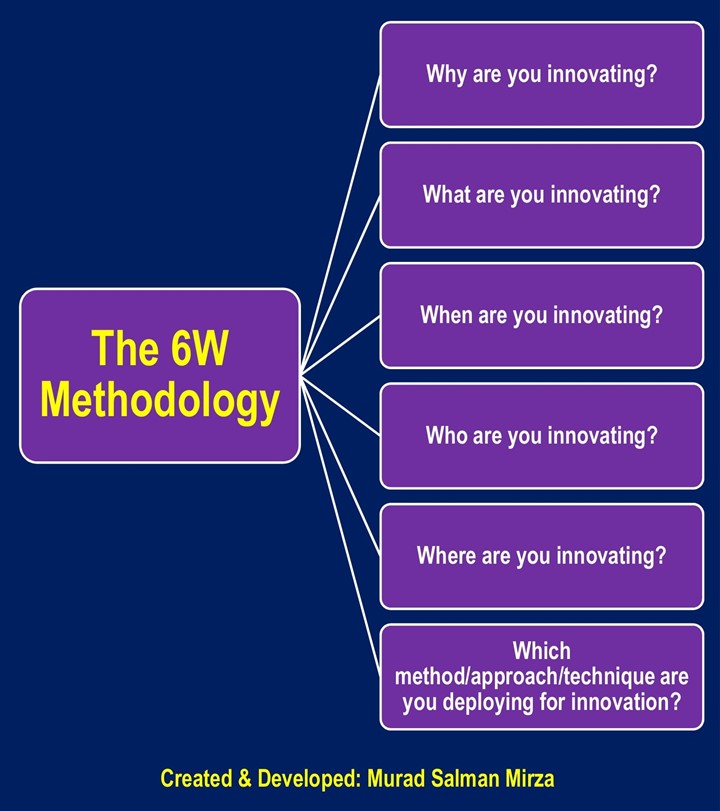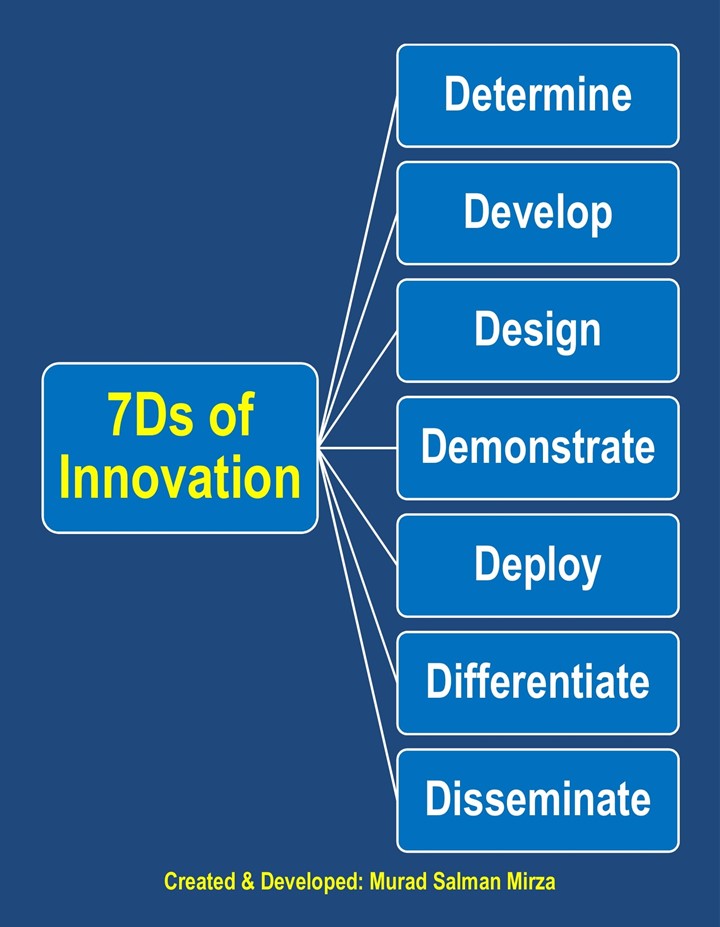Innovation is a journey and not a destination. There is no ‘final’ arrival, rather, it is a relatively ‘short sojourn’ before the beginning of the next phase to create a viable ‘breathing space’ with respect to the competition until they catch up and ‘squeeze’ the ‘profit margins and market goodwill’ being earned at the expense of their earlier shortcomings. Unfortunately, this fact is frequently lost within the lofty visions propounded by the corporate leadership as they align their organizational imperatives behind the ‘verbiage’ of being an ‘exemplary’ business entity since the very foundations of being ‘exemplary’ are fluid in nature due to the rapid evolution in the Digital Age. This can be seen in the emphasis that has shifted from being ‘Stable’ to ‘Agile’ to ‘Hybrid’ in terms of ‘organizational functionality’ to stay relevant and competitive for overcoming the challenges of ‘opportunistic’ competitors and ‘groundbreaking’ startups.
The Digital Age has ignited the passion for innovation like never before as consumers/clients/customers have become more selective in terms of product/service preferences due to personalized factors, e.g., adapting to evolving societal norms, modifying lifestyles due to the lessons learnt from the COVID-19 Pandemic, increased sensitivity to environmental challenges, utilizing technology to monitor the performance of desired brands, yielding to the desires/demands of their ‘near and dear’ ones, etc. This has increased the pressure on organizations to rethink ingrained management approaches and systematically/concretely bridge the detrimental gaps between the ‘Promise of Innovation’ and the ‘Reality of Innovation’ that consistently plague the messy outcomes of disjointed functional interactions. The following table provides multiple examples of such failings:
The aforementioned deficiencies can be overcome by deploying the 6W Methodology in a prudent manner. This consists of asking the following six questions that facilitate astute thinking and galvanize sagacious measures to maximize the productivity of engaging in innovation initiatives:

Why are you innovating?
This question focuses on the ‘Purpose’ aspect since any exercise in innovation can be rendered meaningless/directionless if the reasoning for its existence has no aim/goal/objective to achieve, other than, the appeasement of some ‘easily bruisable egos’ at the top/senior leadership level. Consequently, a ‘shallow’ and ‘rudderless’ initiative often fails to create the desirable ‘buy-in’ and is unceremoniously/grudgingly relegated to the ‘office humor’ section of the corporate grapevine. Such a question needs to answer/incorporate the ‘we’ perspective, rather than, the ‘I’ perspective in terms of the wider expanse of benefits accrued by the organization from its success. It is imperative that the information/material to be used in ‘convincing’ the skeptics be ‘logically robust’ and ‘scrupulously vetted’ by reliable and capable proponents/backers/influencers
What are you innovating?
This question focuses on gaining clarity with respect to the ‘Nitty-gritty’ aspect of the innovation initiative. It requires ‘functional vividness’ that is comprehensible and translatable at all levels of the pertinent organizational hierarchy. It needs to align closely with the ‘Why’ question in terms of assuring/ensuring that no duplication/repudiation of earlier efforts takes place and should be geared towards building upon ‘lessons learnt’ from the past relatable/extractable experiences, rather than, adhering to the notion of ‘reinventing the wheel’ that unnecessarily wastes corporate resources. It requires active engagement with relevant experts who can provide the necessary insights in terms of gauging/appreciating the full scope of the desired improvement
When are you innovating?
This question focuses on provoking thinking pertaining to the ‘Timing’ aspect for engaging in an innovation initiative. It requires the consideration of all significant advantageous and disadvantageous elements that can impact the respective exercise, e.g., change in leadership roles, expansion in an unfamiliar market, hiring of new talent, development of new products/services, engaging in mergers/acquisitions, refinement of policies/processes/procedures/practices in the wake of the COVID-19 Pandemic, introducing technology for increasing operational efficiencies, contractual negotiations with unions, conforming to updated regulatory mandates, etc. Such a temporal contemplation also shields against potential and actual drawbacks/impediments that can often derail/nullify the ‘goodness’ of innovation initiatives even before reaching the ‘maturity’ phase
Who are you innovating?
This question focuses on the ‘Humanistic’ aspect since the workforce engaged/impacted by the innovation initiative also requires a significant ‘internal overhaul’ in terms of their mindset/attitude/behavior for attaining significant accomplishments in the particular exercise. It should be applied to all levels of the organizational hierarchy without any exemption, especially, at the ‘leadership/management/influencer’ levels since such roles generally play a critical part in determining the success/failure of innovation initiatives. A key ‘victory’ in the respective context is to ‘convert’ the ‘stubborn skeptics’ into ‘ardent advocates’ by exploring/creating/highlighting ‘win-win’ situations with their active participation and giving them the ‘visible’ support for ‘ambassadorial roles’ in achieving desired objectives
Where are you innovating?
This question focuses on the ‘Location’ aspect since there are frequently unique circumstances that are specific to geographically-dispersed places, especially, in case of multinational corporations (MNCs). Such distinct elements can vary on a wide scale, e.g., cultural differences between the head office and the subsidiaries, rules and regulations restricting the ‘excessive’ influx of ‘replacement’ technology that might ‘violate’ the labor laws designed to protect unionized workers, office politics that favors certain employees over others in terms of access to growth and development opportunities, access issues with respect to certain knowhow exacerbated by precarious internet connections due to remoteness of sites, etc. It is important that the leadership at such marginalized/remote locations be fully supported with the necessary resources to help them in facilitating their team members in becoming viable contributors to the innovation initiative and avoid the prospect of lagging in crucial performance gains being foreseen as a consequence of the respective exercise
Which method/approach/technique are you deploying for innovation?
This question focuses on the ‘Policy/Process/Procedure/Practice’ aspect as these are the foundational elements of an ‘organized’, ‘productive’ and ‘vibrant’ management system. It is imperative that any ‘structured’ measures taken in the respective context be free of any ‘skewed’ biases and ‘regressive’ influences to preserve the ‘sanctity’ of the innovative initiative. Another important consideration is the selection of capable talent to maximize the probability of efficacious outcomes by ‘assiduously’ delegating the responsibility for achieving the desired goals/objectives of such an exercise within a specified timeframe while assuring/ensuring the provision of necessary resources and entrusting unambiguous authoritative powers to facilitate timely/hassle-free/rational decision-making. Additionally, it also calls for mustering significant amount of ‘fortitude’ for ‘shelving’ old/obsolete ways/norms/customs in the face of stiff opposition from ‘chronically privileged’ segments of the workforce.
The operationalization of the 6W Methodology provides the innovator(s) with enough ‘contemplative’ and ‘reflective’ material to assist in strengthening/reinforcing innovation initiatives in terms of their success probabilities. It can also help in providing a self-check in terms of conscientiously assessing the detrimental impacts of ‘unregulated’ innovation initiatives that are occurring across the corporate landscape with increasing frequency in the absence of astute and meticulous legislation, e.g., designing of Oculus headsets that are designed to kill gamers upon losing (https://lnkd.in/e7ESYYpY), starting a religion with Artificial Intelligence (AI) as an emerging Godhead (https://lnkd.in/eh2MYfDN), using AI as an unbridled weapon of war (https://lnkd.in/ef3mVK-q), duping customers/clients with crypto currency exchange scams (https://lnkd.in/evMPCgBH), introducing a seemingly ‘know-it-all’/’access-it-all’/’facilitate-it-all’ chatbot that can curtail/marginalize ‘humanistic’ ingenuity and thought processes with its limitations (https://lnkd.in/exGzdECK), etc.
As an example, the following ‘7Ds of Innovation’ can be ‘boosted’ with the 6W Methodology as a ‘structured’ approach with appropriate safeguards while engaging in innovation initiatives to assure/ensure a high probability of success:

Determine
Refers to generating the conceptualization of the intended innovation in terms of its broader nature, overall purpose and general propounding of the desired parameters
Develop
Refers to bringing tangible fruition to the conceptualized innovation by building upon the nature, purpose and detailing of the desired parameters in terms of the goals/objectives
Design
Refers to adding practical/operational aspects to the desired parameters for assuring/ensuring functionality and feasibility while adhering to the applicable regulatory, sustainability and ethical considerations
Demonstrate
Refers to showing the influencers/decision-makers the applicability/viability of the desired innovation for convincing and gaining approval to move forward with field testing
Deploy
Refers to doing a trial in the field to test the efficacy of functional and feasible parameters of innovation in an unbiased/unhindered/uninfluenced manner
Differentiate
Refers to selecting and refining the elements/aspects of innovation that assure/ensure the fulfillment of desired goals/objectives and gaining approval from pertinent authorities
Disseminate
Refers to inculcating the ‘approved’ innovation within all relevant functional parts of the organization with the necessary ‘checks and balances’ ingrained through an efficient and effective monitoring system
Innovation has become a ‘necessity’, rather than, an ‘exception’ for defining/distinguishing organizations that are leading the ‘race’ in relevancy and competitiveness in the Digital Age and the respective ‘principle’ is likely to remain ‘felicitous’ for the foreseeable future. Consequently, ‘lifecycles of excellence’ are getting shorter and ‘sustainable success’ is steadily yielding to ‘temporal success’ as disruptive innovations shake up the ecosystems with new levels of ‘gratifying’ nirvana at regular intervals, therefore, ‘true’ success lies in matching the pace of innovation. Are you game?








